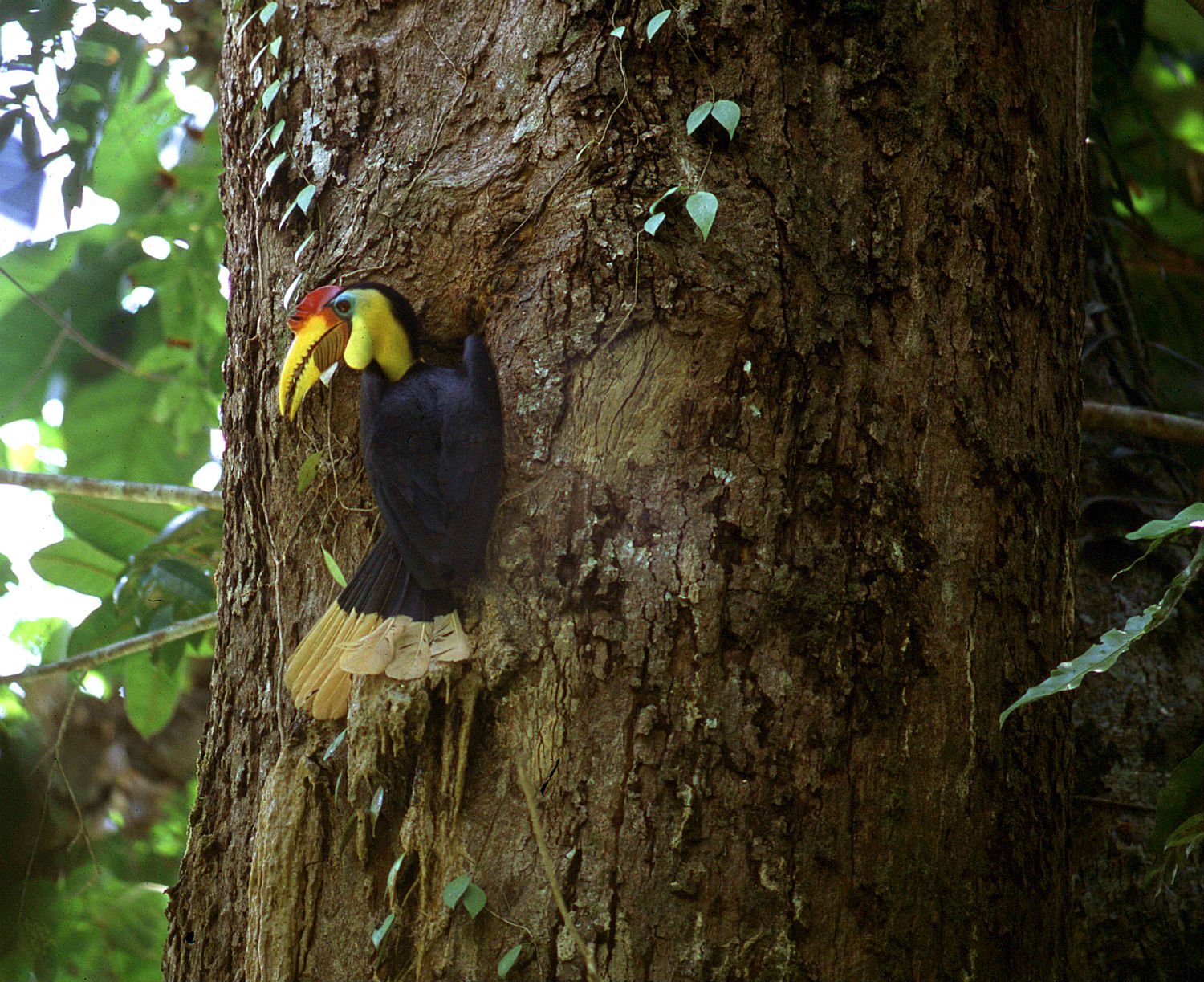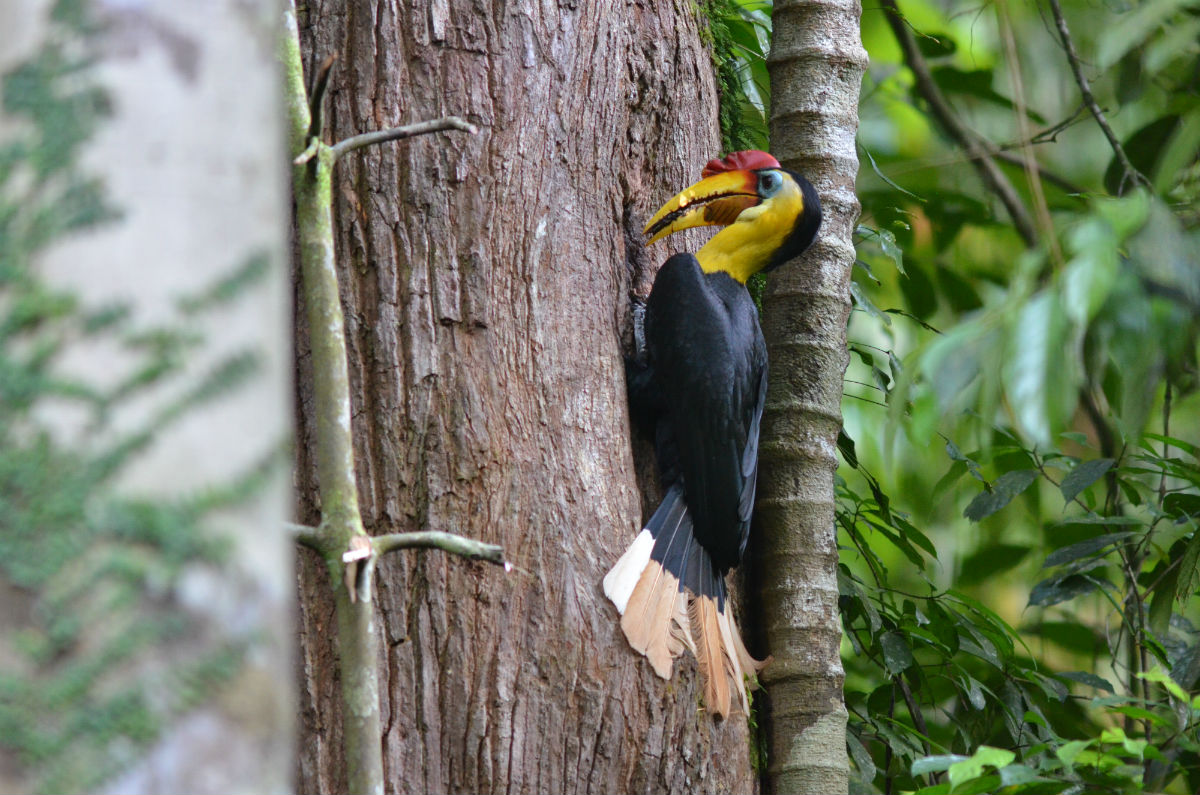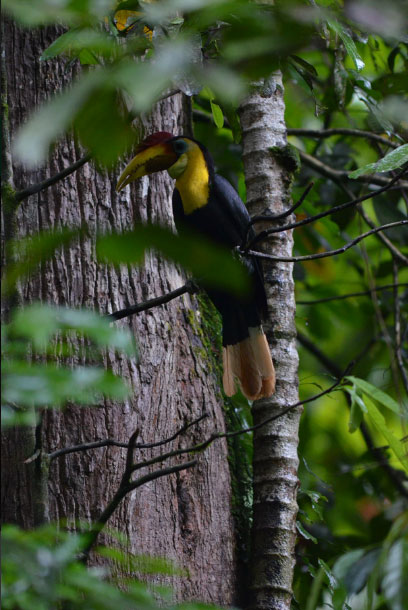Found in lowland rainforest, especially coastal swamp forest; usually below 30 m elevation but recorded up to 400 m a.s.l. Extends into selectively logged forest, but not secondary forest.
It is not conspicuous and is usually seen more than heard. Feeds in the canopy of large emergent trees, mainly on fruits such as drupes; it is less attracted to figs than some other hornbills.
It also takes some animal items when available. Breeding diet 67% fruit, with Oncosperma horridum (Arecaceae), Litsea and Cinnamomum (Lauraceae), Aglaia (Meliaceae), Gymnacranthera (Myristicaceae) and Syzygium (Myrtaceae) predominant, and 33% animals, mainly insects and land snails but also feeds on reptiles frogs and bird’s eggs.
It searches through the foliage for food or occasionally picks off fruits in flight. Usually lives in pairs but sometimes in small flocks of up to 30 individuals. It move extensively in search of fruiting trees on loud whooshing wing-beats, flying up to 10 km. high above the forest.
It also attends communal roosts; has been know to cross open sea.



